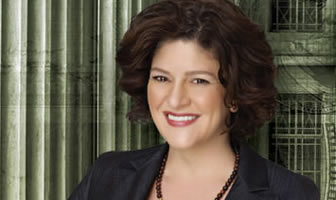The What, Why and How of the Final Status Conference
Our speakers are always providing our attendees with helpful tips for their practice, and Jill Kopeikin of Kopeikin Law, is no exception. Jill is one of those speakers who provides fantastic handouts for every topic on which she speaks and she is an attendee favorite! Jill has spoken at many of our annual Superior Court Boot Camps and Federal Court Boot Camps.
Our blog readers can take 50% off our boot camp recordings with the coupon code 50FSC.
For one of our Superior Court Boot Camps, Jill provided a great tip-sheet thoroughly explaining the Final Status Conference (FSC). If you’d like to take a look at the full list of topics for our recent 15th Annual Superior Court Boot Camp (Oct. 2020), please click on the link provided.
So, there are a few things you need to know and think about when it comes to the Final Status Conference.
Written by Jill Kopeikin of Kopeikin Law
- First, they’re discretionary:
- There is no California statutory requirement to have a final status conference, merely statutory authorization. See Rule 4.112 Cal. Criminal Rules (“The Court may hold a readiness conference…”, (emphasis added)); see also Rule 3.723 Cal. Rules of Court (“The court on its own motion may order, or a party or parties may request, that an additional case management conference be held at any time…”
- Given that, what is the purpose? And what are the typical uses?
- Judges use the final status conferences (sometimes called an “issues” or “trial readiness” conference) to:
- Assess the likelihood of settlement
- Ensure trial readiness
- Give the parties a chance to raise any issues that may impact the efficient flow of trial
- Confirm whether a previously reserved jury will be required. (Judges always try to eliminate a jury trial where possible.)
- Identify disputed/undisputed facts
- Discuss exhibits that may be admitted by agreement without laying a foundation, and those that require a foundation
- Explain the Court’s expectations about readiness and trial schedule
- Hear and adjudicate pretrial motions. For example, in a “Readiness” conferences held in criminal cases common motions resolved before or at the readiness trial include: Motions to suppress; Pitchess motions.
- Counsel may use the status conference to:
- Learn more about the Court’s trial practices and preferences.
- Raise issues that may affect the timing or flow of trial (e.g., explaining that expert witness needing to be called out of order, or identifying preliminary issues to be raised, or notify the Court of a waiver of jury).
- Seek the adjudication of any pretrial motions that may not have been resolved
- Discuss equipment needs and handling
- Discuss exhibit marking, submission and handling at trial, if not already done
- Try to engage settlement discussions without showing weakness
- Judges use the final status conferences (sometimes called an “issues” or “trial readiness” conference) to:
- And lastly, what about the timing & procedures?
- The timing and procedures associated with final pretrial or readiness conferences vary greatly by county, expedited/short or long cause, whether limited or unlimited jurisdiction and criminal versus civil. So do not assume that what you did in San Francisco Superior will be consistent with what you will do in a new case in Orange County. It will not.
- May or may not be standard within a jurisdiction as between judges.
- Typically held in the last two weeks prior to trial.
- May or may not be coupled with a court-supervised settlement conference, or these may be held separately.
- Typically, the exhibits, motions in limine, issues varying trial order or scope, disputes about significant issues that may impact trial scope, order or timing, will be resolved at or before the final pretrial conference.
We hope you’ve found this list helpful and we encourage you to email us, or comment below, if you’d like more tips like these or have any questions.
- California programs: 17th Annual Federal Court Boot Camp (2021), 15th Annual Superior Court Boot Camp (Oct, 2020).
- Florida programs: Federal Court Boot Camp (2017) and Circuit Court Boot Camp (2021)
- Illinois programs: Federal Court & Litigation Boot Camp (2021) and Circuit Court Boot Camp (2020)




